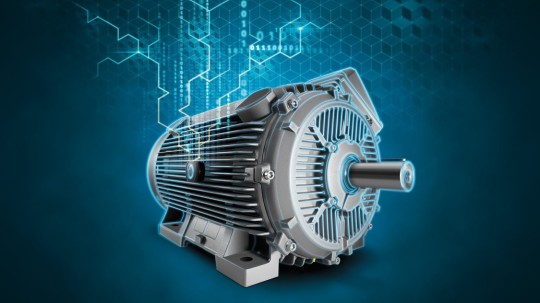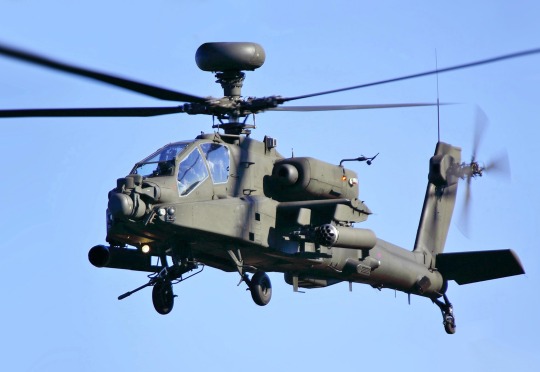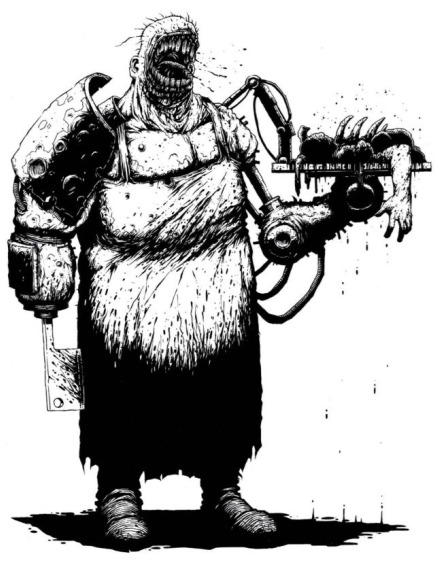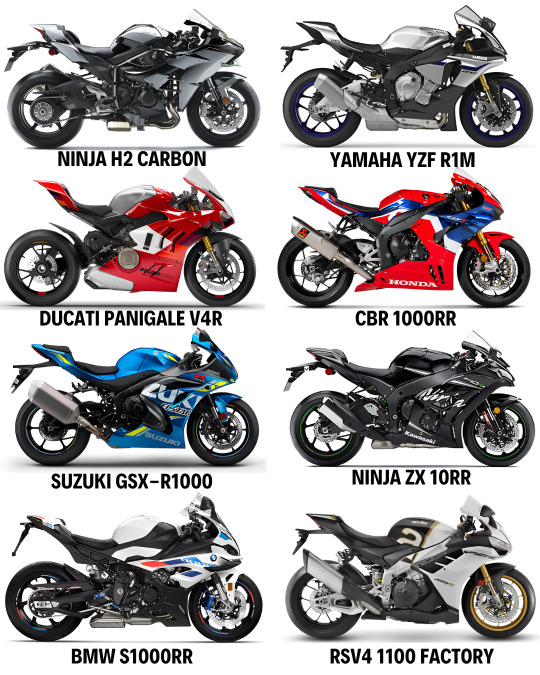#Variable Speed Technology
Explore tagged Tumblr posts
Text
Induction Generators Market Overview and Regional Outlook Study 2017 – 2032

Market Overview:
The induction generators market refers to the industry involved in the production, distribution, and sales of induction generators. Induction generators are a type of electrical generator that operates based on the principle of electromagnetic induction. They are commonly used in various applications, including wind turbines, hydroelectric power plants, and standalone power systems.
Induction Generators Market is projected to be worth USD 44.8 billion by 2032, registering a CAGR of 9.50% during the forecast period (2023-2032)
Here are some key points about the induction generators market:
Growing Renewable Energy Sector: The increasing focus on renewable energy sources, such as wind and hydro power, has driven the demand for induction generators. These generators are widely used in wind turbines to convert the kinetic energy of the wind into electrical energy.
High Efficiency and Reliability: Induction generators are known for their high efficiency and reliability. They have simple construction, require minimal maintenance, and offer good performance in various operating conditions. These factors contribute to their popularity in power generation applications.
Varied Power Output Range: Induction generators are available in a wide range of power outputs, ranging from a few kilowatts to several megawatts. This flexibility makes them suitable for both small-scale and large-scale power generation projects.
Technological Advancements: Ongoing technological advancements have led to the development of more efficient and advanced induction generators. These advancements aim to enhance power generation efficiency, reduce costs, and improve overall performance.
Environmental Considerations: With increasing concerns about climate change and the need to reduce greenhouse gas emissions, the adoption of renewable energy sources like wind and hydro power is gaining momentum. Induction generators play a significant role in supporting this transition by providing clean and sustainable power generation solutions.
Government Policies and Incentives: Government initiatives, regulations, and incentives supporting renewable energy projects can significantly impact the induction generators market. Subsidies, feed-in tariffs, and tax benefits provided by governments encourage the adoption of renewable energy technologies, thereby driving the demand for induction generators.
Future Outlook: The induction generators market is expected to witness continued growth in the coming years due to the increasing demand for renewable energy and the transition towards a low-carbon economy. Technological advancements, cost reductions, and supportive government policies are likely to further boost market expansion.
We recommend referring our Stringent datalytics firm, industry publications, and websites that specialize in providing market reports. These sources often offer comprehensive analysis, market trends, growth forecasts, competitive landscape, and other valuable insights into this market.
By visiting our website or contacting us directly, you can explore the availability of specific reports related to this market. These reports often require a purchase or subscription, but we provide comprehensive and in-depth information that can be valuable for businesses, investors, and individuals interested in this market.
“Remember to look for recent reports to ensure you have the most current and relevant information.”
Click Here, To Get Free Sample Report: https://stringentdatalytics.com/sample-request/induction-generators-market/3308/
Market Segmentations:
Global Induction Generators Market: By Company • ABB • GE • Brush HMA • Techtop • Victron Energy • SycoTec • Sicme Motori • Robert Bosch • TRUMPF • VEM Group Global Induction Generators Market: By Type • High Voltage Induction Generators • Medium Voltage Induction Generators • Low Voltage Induction Generators Global Induction Generators Market: By Application • Wind Turbines • Micro Hydro Installations • Other Global Induction Generators Market: Regional Analysis All the regional segmentation has been studied based on recent and future trends, and the market is forecasted throughout the prediction period. The countries covered in the regional analysis of the Global Induction Generators market report are U.S., Canada, and Mexico in North America, Germany, France, U.K., Russia, Italy, Spain, Turkey, Netherlands, Switzerland, Belgium, and Rest of Europe in Europe, Singapore, Malaysia, Australia, Thailand, Indonesia, Philippines, China, Japan, India, South Korea, Rest of Asia-Pacific (APAC) in the Asia-Pacific (APAC), Saudi Arabia, U.A.E, South Africa, Egypt, Israel, Rest of Middle East and Africa (MEA) as a part of Middle East and Africa (MEA), and Argentina, Brazil, and Rest of South America as part of South America.
Visit Report Page for More Details: https://stringentdatalytics.com/reports/induction-generators-market/3308/
Reasons to Purchase Induction Generators Market Report:
• To obtain insights into industry trends and dynamics, including market size, growth rates, and important factors and difficulties. This study offers insightful information on these topics.
• To identify important participants and rivals: This research studies can assist companies in identifying key participants and rivals in their sector, along with their market share, business plans, and strengths and weaknesses.
• To comprehend consumer behaviour: these research studies can offer insightful information about customer behaviour, including preferences, spending patterns, and demographics.
• To assess market opportunities: These research studies can aid companies in assessing market chances, such as prospective new goods or services, fresh markets, and new trends.
• To make well-informed business decisions: These research reports give companies data-driven insights that they may use to plan their strategy, develop new products, and devise marketing and advertising plans.
In general, market research studies offer companies and organisations useful data that can aid in making decisions and maintaining competitiveness in their industry. They can offer a strong basis for decision-making, strategy formulation, and company planning.
Click Here, To Buy Premium Report: https://stringentdatalytics.com/purchase/induction-generators-market/3308/?license=single
About US:
Stringent Datalytics offers both custom and syndicated market research reports. Custom market research reports are tailored to a specific client's needs and requirements. These reports provide unique insights into a particular industry or market segment and can help businesses make informed decisions about their strategies and operations.
Syndicated market research reports, on the other hand, are pre-existing reports that are available for purchase by multiple clients. These reports are often produced on a regular basis, such as annually or quarterly, and cover a broad range of industries and market segments. Syndicated reports provide clients with insights into industry trends, market sizes, and competitive landscapes. By offering both custom and syndicated reports, Stringent Datalytics can provide clients with a range of market research solutions that can be customized to their specific needs
Contact US:
Stringent Datalytics
Contact No - +1 346 666 6655
Email Id - [email protected]
Web - https://stringentdatalytics.com/
#Certainly! Here are 30 tags for the Induction Generators Market separated by commas:#Induction Generators#Renewable Energy#Wind Power#Power Generation#Electrical Engineering#Grid Integration#Energy Efficiency#Variable Speed Technology#Power Electronics#Smart Grid#Distributed Generation#Wind Turbines#Grid Stability#Reactive Power Control#Energy Conversion#Power Systems#Generator Control#Reactive Power Compensation#Wind Farm#Voltage Regulation#Synchronous Generators#Harmonics#Reactive Power Support#Electric Power Generation#Power Quality#Wind Energy Conversion System#Stator Control#Renewable Energy Integration#Power Factor Correction
1 note
·
View note
Text

#soft starters#saudi arabia#amps electric trading#drive#speed drive#variable speed drive#speed variable drive#technology#circuit breaker
0 notes
Text
COD Characters as Different Military Aircrafts
———
Soap -> A-10 Thunderbolt: Known for its loud and heavy gatling gun, outstanding close air support and its durability against damage. Its fierce and accurate air defense marks it as one of the best support aircrafts to exist.

Ghost -> B-2 Spirit: Advanced stealth tactics and its ability to easily evade enemy detection to reign down its deadly force makes this bomber, a ghost in the sky.

Roach -> F-14 Tomcat: Despite its air superiority and esteemed long range capabilities, the uncommon design of its “variable-sweep wings” marks it as the most distinctive and intriguing aspect of the aircraft.

Gaz -> AH-64 Apache: Designed for high survivability and equipped with advanced technological targeting components makes it one of the best air support aircrafts in active service.

Price -> P-51 Mustang: An oldie but a goodie; was the star of the show in its prime with its outstanding range of speed, maneuverability, durability, and it’s skill to adapt quickly to different conditions.

Laswell -> E-3 Sentry: Designated for surveillance, communications, and command; it’s your eyes in the sky.

Rudy -> KC-135 Stratotanker: You can always count on this aerial refueling tanker. When in need of support when you’re down, it’s got your back, always loyal to its allies.

Alejandro -> F-15 Eagle: Was built for extreme power, resilience, agility, and to display its aggressive dog-fighting capabilities proving it better than the feared oppositions. Never lost a fight protecting what it stood for.

Valeria -> F-22 Raptor: This jet’s extreme capability to fly nearly completely invisible through radars makes it dangerous in its attacks. The state of the art technological advances allows it to fool anyone who comes across, creating a perfect chance to strike and claim victory.

Graves -> V-22 Osprey: Although its dodgy components can wear the reliability of this aircraft thin, it’s service is still exceptional.

———
If you want a part 2, recommend some characters below for me to do next @_@
#john soap mactavish#simon ghost riley#gary roach sanderson#kyle gaz garrick#john price#kate laswell#rodolfo parra#alejandro vargas#valeria garza#phillip graves#mw2#cod mw2#call of duty#cod characters#modern warfare#og mw2#military#military aircraft#a 10 warthog#b 2 spirit#f 14 tomcat#p 51 mustang#e 3 sentry#kc 135 stratotanker#ah 64 apache#f 15 eagle#f 22 raptor#v 22 osprey#ghost cod#soap mactavish
62 notes
·
View notes
Text

The Grumman X-29 Experimental Aircraft

The Grumman X-29 was an experimental aircraft developed by the United States in the 1980s, aimed at testing advanced aviation technologies. One of its most unique features was its forward-swept wings, which improved maneuverability and reduced drag. However, this design introduced significant aerodynamic challenges, such as the tendency of the wings to twist under stress. To address this, the X-29 utilized advanced composite materials, which provided the necessary strength without adding excess weight.

The X-29 was inherently unstable due to its forward-swept wings, necessitating a sophisticated digital fly-by-wire control system. This system allowed a computer to continuously make adjustments to keep the aircraft stable during flight. Additionally, the aircraft featured canard control surfaces, located in front of the main wings, which enhanced control and maneuverability, particularly at high angles of attack.

Another key feature of the X-29 was its variable-geometry engine inlets, designed to optimize airflow into the engine across different flight conditions. This design allowed the aircraft to maintain efficiency at various speeds and altitudes. Together, these innovative design elements made the X-29 a complex and advanced aircraft for its time.

The X-29 first flew on December 14, 1984, under the management of NASA and the United States Air Force. Two X-29 aircraft were constructed, and they accumulated over 400 test flights. These tests focused on exploring the aircraft's unique aerodynamic and flight control characteristics, providing valuable data on how forward-swept wings performed under various conditions.

The primary objective of the X-29 program was to investigate technologies that could be used in future fighter aircraft, with a particular focus on improving maneuverability and control at high angles of attack. Although the X-29 was never intended to enter production, the insights gained from its development contributed to future advancements in aircraft design.

While the X-29 did not see operational service, its legacy is significant. The technologies it explored, including forward-swept wings, composite materials, and digital flight controls, paved the way for innovations in fighter aircraft. Today, the X-29 is remembered as an important milestone in the study of unconventional aircraft designs and aerodynamics.

An interesting and lesser-known fact about the Grumman X-29 is that, despite its radical design, the aircraft reused components from existing fighter jets to save on development costs. Specifically, the fuselage of the X-29 was derived from the Northrop F-5A Freedom Fighter, and its landing gear was taken from the General Dynamics F-16 Fighting Falcon. This blending of cutting-edge technology with proven components from earlier aircraft helped keep the project within a more manageable budget, demonstrating a creative approach to experimental aircraft design during that era.

#responsive thoughts#aircraft#flight#experimental aircraft#x-series#military#jet fighter#x-29#forward swept wing
121 notes
·
View notes
Text

What is the reason for modern aircraft not using swept back wings like the F-14 Tomcat?
The main reason modern aircraft do not use swept-back wings like the F-14 is due to the advancements in aerodynamics and materials science. Swept-back wings were initially developed to delay the onset of shock waves and reduce drag at transonic and supersonic speeds.
While this design was effective for the F-14, it came with trade-offs, particularly in terms of complexity and weight. The variable-sweep mechanism added significant weight and maintenance requirements, which are less desirable in today's cost-conscious and efficiency-driven aviation industry.
Also, modern aircraft benefit from advanced computational fluid dynamics (CFD) and wind tunnel testing, allowing engineers to optimize wing shapes for specific performance criteria without relying on variable-sweep designs. This has led to the development of more efficient fixed-wing designs that can achieve similar or even superior performance across a broader range of speeds. For example, the F-22 Raptor and F-35 Lightning II utilize fixed-wing designs with advanced aerodynamics and stealth capabilities, making them highly effective in modern combat scenarios.
Modern fighter jets are designed to be multi-role platforms, capable of performing a wide range of missions from air superiority to ground attack. This versatility demands a design that can perform well in various flight regimes, from low-speed, high-angle-of-attack maneuvers to high-speed intercepts. Fixed-wing designs, coupled with advanced flight control systems, provide the necessary performance and flexibility without the added complexity of variable-sweep wings.
The emphasis on stealth technology in modern military aviation has influenced wing design. Swept-back wings, while beneficial for high-speed flight, can create larger radar cross-sections, making the aircraft more detectable. Modern stealth aircraft are designed with smooth, continuous surfaces and internal weapon bays to minimize raddar signatures, which is more easily achieved with fixed-wing designs.
74 notes
·
View notes
Text
Regent "Justicar" - 3153 iteration

Regent 'Justicar'
Mass: 90 tons Chassis: Reynard Standard Type Power Plant: GM 270 Cruising Speed: 32.4 kph Maximum Speed: 54 kph Jump Jets: None Jump Capacity: 0 meters Armor: Durallex Heavy Special Armament: 49.5 tons of pod space Manufacturer: CSF Project Reynard with Coventry Metal Works and Technicron Manufacturing Primary Factory: Coventry, Savannah Communication System: MegaBand System 21 Targeting & Tracking System: Dtrac Suite 4 Introduction Year: 3153 Tech Rating/Availability: F/X-X-X-X Cost: 18,051,188 C-bills
Type: Regent Technology Base: Mixed (Unofficial) Tonnage: 90 Battle Value: 2,240
Equipment Mass Internal Structure Composite 4.5 Engine 270 Fusion 14.5 Walking MP: 3 Running MP: 5 Jumping MP: 0 Double Heat Sink 20 [40] 10 XL Gyro 1.5 Small Cockpit 2 Armor Factor 279 17.5 Internal Armor Structure Value Head 3 9 Center Torso 29 44 Center Torso (rear) 14 R/L Torso 19 29 R/L Torso (rear) 9 R/L Arm 15 30 R/L Leg 19 38
Weight and Space Allocation Location Fixed Space Remaining Head None 2 Center Torso None 0 Right Torso None 12 Left Torso None 12 Right Arm None 9 Left Arm None 9 Right Leg None 2 Left Leg None 2
Right Arm Actuators: Shoulder, Upper Arm, Lower Arm Left Arm Actuators: Shoulder, Upper Arm, Lower Arm
Weapons and Ammo Location Critical Heat Tonnage Double Heat Sink LL 2 - 1.0 LAC/20 RT 6 7 9.0 ER Large Laser RT 1 12 4.0 ECM Suite RT 1 - 1.0 Double Heat Sink RT 2 - 1.0 Light Active Probe RT 1 - 0.5 Flail LA 4 - 5.0 Medium Pulse Laser LA 1 4 2.0 Double Heat Sink LA 2 - 1.0 CASE II LT 1 - 0.5 ER Large Laser LT 1 12 4.0 Streak SRM 4 LT 1 3 2.0 3 Double Heat Sink LT 6 - 3.0 Caseless LAC/20 Ammo (20) LT 2 - 2.0 Streak SRM 4 Ammo (25) LT 1 - 1.0 Double Heat Sink RL 2 - 1.0 Armored Cowl (Armored) HD 1 - 1.0 Micro Pulse Laser HD 1 1 0.5 ER Large Laser RA 1 12 4.0 Medium Pulse Laser RA 1 4 2.0 3 Double Heat Sink RA 6 - 3.0
Features the following design quirks: Accurate Weapon (all), Battle Computer, Barrel Fists (LA), Battle Fists (LA), Combat Computer, Cowl, Easy to Maintain, Easy to Pilot, Improved Communications, Improved Cooling Jacket (all), Improved Sensors, Multi-Trac, Variable Range Targeting, Vestigial Hand (LA)
22 notes
·
View notes
Text
Homebrew Horror: Dominion Disassemblers

(Art from The Book of Unremitting Horror, pg. 66)
Though this is beyond the knowledge of any worldly being, the Dominion of the Black was not always the galactic union it is now. Until a united council with a common goal took the head of the Dominion, wars both petty and planet-scarring were common among its many factions, though in the centuries since their grand union, these squabbles have been reduced to near-nonexistence except when weapons must be tested.
Many relics from this tumultuous time remain in use even to this day, one of the most 'famous' being the Gan-Dergorin, known in the common tongue as Dominion Disassembler, monstrous, nigh-unkillable biomechanical titans with a unique behavioral quirk built into their very genetic code which made them useful in the old wars, and has them remaining useful even now, long after they're no longer needed for their original purpose: destroying Dominion technology. The war machines of the Dominion are unlike any of the minor scouting and scientific units seen on Golarion's soil, the twisted mixtures of flesh and steel nearly impossible to truly put down for good, able to continue their terrible march even as enormous portions of their bodies were torn away.
That is where the Gan-Dergorin come in. These bestial constructs have a simple tactic when facing down any enemy: tear it to pieces too small to remain active. Even the most resilient Dominion machines of terror cannot survive the thoroughness of the destruction that Disassemblers enact upon them, severing every single joint and connector from one another until their victims are rent to their smallest possible components. A Disassembler which has the time to do so will then go even further by separating all types of tissue and matter from one another, then carefully sorting the mangled gore into piles and rows based on how useful it believes its alien masters may find the components, behavior which assured a steady stream of resources for the flesh-forges of the Dominion.
Even today, their gruesome displays are useful when intimidating or punishing captive populations, though Dominion science has advanced to the point such brutal measures are no longer needed; they have much more thorough and effective means of reducing living creatures to their component parts. As such, Disassemblers are used as weapons of terror against the Dominion's enemies among the stars and within their own populations, though this isn't to say they're restricted to distant worlds.
The arrival of a Disassembler on soil beyond the Dominion's grip is an occurrence which is rare to the point of nonexistence, but it has happened both by accident (errant portals and teleportation errors) and purposeful action. On the exceedingly rare occasions when a cultist manages to establish and survive contact with entities concerned with the Dominion's war effort, they can be convinced to send one of these horrors to the cultist's world. Rarely does the cultist survive to give the war machines an actual order, allowing the machine to do what it does best: kill anything it encounters, and assure its own continued survival.
Gan-Dergorin CR 11 Chaotic Evil Large Construct Init +2; Senses: Darkvision 80ft, Low-light vision, blindsense 10 ft, Perception +17 Aura: Frightful Presence (60ft, DC 15) ----- Defense ----- AC 25; touch 11; flat-footed 23 (+2 Dex, +14 natural, -1 size) HP:110 (13d10+30) Fast Healing 5 Fort +4, Ref +6, Will +7 Defensive Abilities: Reassemble, Upgrade; DR 5/--; Immune Construct traits; Resist Fire 10, Cold 10, Electricity 10; Weakness Serial Number, Thorough Disassembly ----- Offense ----- Speed: 30 ft, climb 10ft Melee: Pneumatic Cleaver +19/+14/+9 (2d6+6/x3), Variable Arms +13 (2d6+3/19-20) Space/Reach: 10ft/10ft ----- Statistics ----- Str 22, Dex 15, Con --, Int 10, Wis 16, Cha 6 Base Atk +13; CMB +20; CMD 32 Feats: Cleave, Cleaving Finish, Critical Focus, Improved Cleaving Finish, Great Cleave, Power Attack, Technologist(B), Weapon Focus (Pneumatic Cleaver) Skills: Climb +19, Disable Device +9 (+13 vs machinery/technology), Perception +17, Stealth +3; Racial Modifiers: +4 to Disable Device checks against complex machinery and technology Languages: Aklo (rarely speaks) SQ: Freeze (pile of metal junk), Standing Orders, Thorough Disassembly ----- Ecology ----- Environment: Any Organization: Solitary Treasure: Standard (scrap material, integrated items)
----- Combat: Disassemblers are not complicated creatures. They charge into combat with reckless abandon, using their Great Cleave and Improved Cleaving Finish to slaughter as many weak enemies as they can with a single attack before focusing down remaining foes one at a time with their Full-Attacks, using Power Attack at every opportunity. If given an option, Disassemblers prefer to target any creature capable dealing damage it cannot resist or nullify. A Disassembler will chase down any creature it believes it can kill and will not stop until its enemy escapes or it is driven back by damage.
Morale: A Disassembler brought below 1/4th of its HP maximum will immediately retreat to recover, even if it means abandoning fallen foes, Once it has regained at least half of its total HP and perhaps integrated new weapons, it will track down its foes to dispatch them. If it is slain in combat but permitted to return to function, it will Upgrade itself and track down its killers if possible, and follow its Standing Orders if not.
-----
Reassemble (Ex): Dominion Disassemblers can reattach severed limbs and portions of their bodies by holding it to themselves for 1 full round. A Dominion Disassembler is not destroyed when it reaches 0 HP, but is rendered inert and helpless. 1d4 hours after being reduced to 0 HP, all the alien machinery within whirls back to life--it reactivates at 1 hitpoint and resumes Fast Healing. Only the thorough and comprehensive destruction of its remains using methods such as immersion in magma, acid, or a similar substance, or turning to ash via Disintegrate or similar, can prevent a Disassembler from returning to function; otherwise, it can pull itself together from even the smallest remains.
Serial Number (Ex): All Disassemblers possess a serial number etched on a plate of alien metal somewhere within their body which is kept hidden near their centers. The number cannot be observed unless the construct has been rendered helpless, and even then it requires a DC 23 Perception check to find. Any creature capable of reading and speaking Aklo can make a DC 23 Linguistics check to memorize the Serial Number or write it down perfectly.
A creature may give a verbal command to a Disassembler by speaking its entire serial number aloud and stating the action they wish it to take, in Aklo. Due to the length and complexity of each serial number, this is a full-round action which provokes an attack of opportunity, and being struck by the attack of opportunity ruins the attempt to speak the number. If left without orders, Disassemblers typically try to destroy any creature that knows their serial number. Most creatures which learn of a Disassembler's serial number can easily get rid of the creature by ordering it to take a self-destructive action, or to accept the effects of a spell which will teleport or plane shift it a great distance away.
Standing Orders (Ex): To await further orders from their commanders, Disassemblers go into a low-power mode if they have not encountered another creature in 24 hours. In this mode, they come to rest and resemble a pile of junk, though they remain somewhat aware of their surroundings and may make Perception checks at a -5 penalty to detect nearby creatures and passively make Stealth checks to hide in plain sight as a pile of scrap. They can remain in this low-power state indefinitely, and will do so as long as they are not alerted to any creature, and spring back to full functionality instantly when alerted.
Thorough Disassembly (Ex): A Disassembler gets Technologist as a bonus feat and has a +4 bonus to Disable Device checks to sabotage or take apart complex machinery and advanced technology, and Disable Device is a class skill for it. In addition, after reducing a creature to 0 HP, the Disassembler is compelled to butcher it to prevent its return. It can resist this compulsion by succeeding a DC 20 Will save; otherwise, it must spend its next round attempting to coup de grace that creature if it is still alive, or to begin ripping it to pieces if it is dead.
Upgrade (Ex): When a Disassembler is defeated but permitted to Reassemble, it learns from its failure and seeks out methods to upgrade itself. A Disassembler has a number of Upgrade Points equal to 3 + its Wisdom modifier (6 for a typical Disassembler) that it may divide as it sees fit, and each time it is defeated, its Upgrade Points reset and may be redistributed. A Disassembler requires 1d4+1 days to make upgrades to itself as it gathers raw material from any source it can find (the DM may rule it finds parts much faster in areas with high amounts of technology), and never wastes time and resources upgrading itself unless it is defeated. It can take most of the upgrades multiple times; their effects stack. It will typically choose upgrades which prevent it from being beaten via the same methods it fell to previously.
1 Point: Gain 10 points of resistance to 1 form of elemental damage, or increases its resistance to an element by 10.
1 Point: Increase its natural armor by +1 or its DR/-- by 1.
1 Point: The Disassembler integrates a set of armor and/or a shield it can get ahold of into its body, granting itself the benefits of wearing the armor/shield (AC, magical abilities) but without suffering armor check penalties or speed reductions. It can only integrate one set of armor and one shield at a time.
2 Points: Increase its walk and climb speed by 10ft each, or gain a 10ft swim speed.
2 Points: Gain a +2 profane bonus to a saving throw of its choice.
3 Points: Gain 25% Fortification.
3 Points: Gain 1 feat it qualifies for.
Variable Arms (Ex): The Disassembler's Variable Arms natural attack can switch between slashing, piercing, or bludgeoning damage as a swift action, or change into a tool capable of fine manipulation which also acts as thieves' tools. The construct can also replace its Pneumatic Cleaver with any melee weapon it finds with 1 minute of work, losing its Cleaver attack but allowing it to use that weapon without penalty. It is considered proficient with any weapon it integrates, and wields even two-handed weapons with a single limb.
59 notes
·
View notes
Text

Top Super Bikes
These motorcycles represent some of the most advanced and high-performance superbikes in the world, designed for speed, precision, and cutting-edge technology. Here's an overview:
1. Yamaha YZF-R1M:
An elite version of the Yamaha R1, the YZF-R1M is a track-focused superbike featuring advanced electronics, Öhlins semi-active suspension, and lightweight carbon fiber bodywork. Its cross-plane crankshaft engine delivers exceptional torque and a unique sound.
2. Ducati Panigale V4 R:
A masterpiece of Italian engineering, the V4 R is Ducati's homologation special for racing. It features a 998cc Desmosedici Stradale R engine, winglets for aerodynamic stability, and top-tier electronics like traction control and wheelie control.
3. Honda CBR1000RR-R Fireblade:
Honda's flagship superbike, this model emphasizes precision and control. Equipped with a high-revving inline-four engine and advanced aerodynamics, it's a favorite among racers and enthusiasts.
4. Suzuki GSX-R1000R:
The GSX-R1000R is Suzuki’s pinnacle sportbike, combining the brand's legendary "Gixxer" heritage with modern tech like a bi-directional quick shifter, ride modes, and adjustable suspension.
5. BMW S1000RR:
Known for its shark-like design and power, the S1000RR boasts a ShiftCam engine for variable valve timing, integrated electronics, and razor-sharp handling.
6. Kawasaki Ninja ZX-10RR:
A race-homologated version of the ZX-10R, the ZX-10RR has a lightweight design, forged pistons, and a screaming inline-four engine tuned for racetrack domination.
7. Aprilia RSV4 1100 Factory:
This Italian superbike blends a 1078cc V4 engine with MotoGP-derived aerodynamics and semi-active suspension, delivering exceptional agility and power.
8. Kawasaki Ninja H2 Carbon:
A street-legal supercharged beast, the H2 Carbon combines jaw-dropping power with carbon-fiber bodywork and advanced electronics, setting it apart as an engineering marvel.
#bikes#electric bikes#motorcycle#triumph#moto#kawasaki#yamaha#ducati#suzuki#bmw#bmw motorsport#superbikes#automobile#automotive
14 notes
·
View notes
Video
youtube
Chevrolet Corvette ZR1X - Full Tech Specs and Performance
This is the new 2026 Chevrolet Corvette ZR1X — the most extreme and technologically advanced Corvette ever built. Under the rear hatch is a hand-assembled 5.5-liter twin-turbocharged LT7 V8, producing a massive 1,064 horsepower and 828 pound-feet of torque. This flat-plane-crank engine revs to 8,000 rpm and uses a unique “maniturbo” design, where the exhaust manifold and turbo housing are combined into one compact unit. The result is lightning-fast spool, reduced lag, and brutal mid-range power. At the front axle, an upgraded electric motor from the Corvette E-Ray adds another 186 horsepower and 145 pound-feet of torque. Combined system output is 1,250 horsepower, delivered through a fully electrified all-wheel-drive setup with torque vectoring for maximum grip and agility. Performance is hypercar-level. Zero to sixty takes under two seconds. The quarter-mile less than nine seconds at over 150 miles per hour. The front motor stays engaged up to 160 mph, then decouples to reduce drag and maximize top-end performance. Drivers can opt for two distinct chassis setups. The standard package uses Michelin Pilot Sport 4S tires and next-gen Magnetic Ride Control for street-focused balance. The ZTK track pack stiffens everything up, swaps in Michelin Cup 2R tires, and adds more aggressive aero calibration for serious cornering. Speaking of aero, the optional Carbon Aero package includes front dive planes, a hood extractor, underbody strakes, and a massive rear wing. Total downforce can reach up to 1,200 pounds, keeping the car planted even at triple-digit speeds. Carbon-ceramic rotors come standard — 16.5 inches up front with massive 10-piston calipers. In testing, the ZR1X pulled up to 1.9 g of deceleration when braking from 180 to 120 miles per hour. Built in Bowling Green with precision and performance in mind, the 2026 Corvette ZR1X is more than a supercar — it’s a declaration that America can build a hypercar. 2026 Chevrolet Corvette ZR1X – Technical Specifications Powertrain Engine Type: LT7 5.5L Twin-Turbocharged DOHC V8 Crankshaft: Flat-plane Engine Output: 1,064 hp @ 7,000 rpm Engine Torque: 828 lb-ft @ 6,000 rpm Turbochargers: Dual 76 mm turbos with integrated "maniturbo" housing and dynamic anti-lag Redline: 8,000 rpm Electric Motor (Front Axle): Output: 186 hp / 145 lb-ft Max Engagement Speed: 160 mph Configuration: Single motor, torque-vectoring capable Total System Output Combined Horsepower: 1,250 hp Combined Torque: Estimated over 950 lb-ft Drivetrain: Electrified All-Wheel Drive (eAWD) Transmission: 8-Speed Dual-Clutch Automatic Performance 0–60 mph: under 2.0 seconds (GM estimate) Quarter Mile: under 9.0 seconds @ more than 150 mph (GM estimate) Top Speed: Not officially released Max Deceleration: Up to 1.9 g from 180 to 120 mph Chassis & Suspension Platform: Mid-engine, aluminum space frame Suspension: Standard: Magnetic Ride Control with adaptive dampers Optional: ZTK Track Pack with stiffer springs and custom tuning Tires: Standard: Michelin Pilot Sport 4S ZTK Package: Michelin Pilot Cup 2R Steering: Electrically assisted, variable ratio Brakes Front: 16.5-inch Carbon-Ceramic Rotors with 10-piston Calipers Rear: Carbon-Ceramic Rotors with 6-piston Calipers Aerodynamics Standard Aero: Functional rear spoiler, underbody paneling Carbon Aero Package (Optional): Carbon fiber dive planes Hood extractor vent Underbody strakes High-mounted rear wing Max Downforce: Up to 1,200 lbs Dimensions (estimated) Length: \~182.3 in Width (w/mirrors): \~79.7 in Height: \~48.6 in Wheelbase: \~107.2 in Curb Weight: Not officially disclosed (expected \~3,900–4,000 lbs) Wheels Front: 20 x 10 in Rear: 21 x 13 in Construction: Lightweight forged aluminum (optional carbon fiber wheels) Production & Assembly Assembly Location: Bowling Green Assembly, Kentucky, USA Engine Hand-Built: Performance Build Center (same facility) Availability Launch: Expected late 2025 Price: To be announced
7 notes
·
View notes
Note
Got a write up on high modernism, or someone else's you would recommend?
I think James C. Scott is the one to coin the term? Where I got it from anyway. You can probably best understand as a) a deep abiding faith capital-P Progress and a teleological view of history and civilization, b) a cult of experts and technocracy, with academic/technical knowledge prized over custom and tradition and 'uneducated' popular opinion and c) a program of using technology and scientific organization to improve the world (which as a necessary precondition requires the world been rationalized and made legible to bureaucratic understanding and scientific optimization.
Though really I use the tag a) with a wildly variable amount of irony depending on what I'm tagging and b) mostly as, like, a vibe.
Uh, think, aesthetically: Brasilia, the Aswan Dam, the Turkestan-Siberian Railway and the Interstate Highway System - overmighty civil services and fordist/state capitalist economics - mass electrification and literacy programs as wholesale national missions - 'towers and flowers' urban design and high speed rail as prestige project - 'measuring the marigolds' and skepticism/demystification as ideological project - land reform but the type that ends up empowering technical experts and state managers as much/more than the peasant farmers - the heroic age of science - the Green Revolution - Better Living Through Chemistry - your first reaction to someone talking about 'the good old days' being infant mortality/forced marriage/smallpox/blood feuds - thinking a world where everything about the world is legible and rationally ordered as an impossible utopia and not a depressive nightmare.
61 notes
·
View notes
Text
Vulture Droid appreciation post and rant :>

I love the cute chattering sounds of them communicating with each other and their adorable walk!!!

To call them by their full name, the Variable Geometry Self-Propelled Battle Droid, were a marvel of CIS engineering. One of the most common starfighters utilized in the war, but they served many purposes! Able to change their configuration to suit both ground and air combat, Vulture Droids were also utilized as shock troops to support ground engagements, effectively becoming mobile walkers that could provide heavy fire support.

They were something to behold in flight, able to quickly transform and travel at speeds of up to 1200 kph/745~ mph. Being autonomous pilots, they were able to perform maneuvers that would downright kill their fleshy opponents, making them some of the most agile fighters to exist to this day. Some would say that their intelligence limited their resourcefulness, but as droid AI technology progressed later in the war, so too did their capability.

They sported standard fighter armaments with a few creative twists. Twin blaster cannons and energy torpedo launchers being the standard. However, they were also sometimes outfitted with buzz droid missile launchers, and even more rarely, ion cannons! Yep, same technology as that big old ship you’re thinking of.

This bad boy.

Don’t worry, I didn’t forget about Hyena Bombers. Vulture droids were used as the basis for their creation, and they evolved from them as more heavily armed and defended aerial units. They saw almost as much deployment as the Vulture Droid, and were known for their characteristic “laugh” as they communicated with one another.

Also, their walker form looked dope as fuck.
This concludes my Vulture Droid rant. I don’t miss the Clone Wars, but I do miss the engineering marvels that it produced. No I will not be talking about Tri-fighters, I don’t like them.
(Most of my info I got from the wookiepedia entries for the Vulture and Hyena, and MetaNerdz Lore’s awesome series on droids. I’ll link his videos and some videos featuring the super cool sounds of the droids below)
youtube
youtube
youtube
#star wars#star wars the clone wars#vulture droid#hehe they’re such silly killing machines I love them#star wars droids#Youtube
4 notes
·
View notes
Text

1st gen Subaru Alcyone. Sold as a Vortex in Australia but we never got these FLAT-6 versions, only flat-4 in NA and turbo with choice of FF or AWD
Hyper technology for greater driver loyalty. Intelligent Express.
Alcyone 2.7ℓ FLAT-6
ALCYONE 2700/1800
The Alcyone is a car with a new concept that anticipates the motorization of the near future. Everything about it has been developed to ensure that the driver feels no burden or stress under any driving conditions and always performs at 100% of its potential. It features a number of electronically controlled mechanisms that realize the ultimate in speed through advanced automatic control, including the next-generation 4WD, Active Torque Split 4WD, and the high-performance 2.7-liter FLAT-6. These intelligent mechanisms dramatically improve the vehicle's dynamic performance and create an unprecedented feeling of high-speed movement.
PHOTO: 4WD 2.7L VX Black Mica
Next-generation intelligent mechanisms create a new driving experience.
FLAT-6
2.7ℓ FLAT-6 Engine with EGI System
EGI Horizontally opposed 6-cylinder 2.7-liter engine
Subaru's traditional horizontally opposed engine has been made into a 6-cylinder engine, the FLAT-6, with a large displacement of 2.7 liters. The ideal rotation and vibration characteristics of the horizontally opposed 6-cylinder engine create a smooth rotation feeling. The flat and powerful torque is only possible with a large displacement. And the excellent basic performance has been carefully tuned with the latest electronic control technology to achieve refined speed. The unparalleled individuality invites you to the pleasure that only the Alcyone can provide. (VX)
EGI turbocharged flat-four 1.8-liter engine
The unrivaled horizontally opposed engine is equipped with a high-performance turbo. In addition to smooth and powerful acceleration from low speeds, the response has been greatly improved by the advancement of the EGI system and tuning of the intake system. (VR, VS)
Electronically controlled active torque split 4WD
"Active Torque Split 4WD" maximizes the potential of 4WD. This drive force control system uses a computer to accurately determine the driving situation and road surface conditions, precisely controlling the torque distribution between the front and rear wheels. Always achieving ideal high-speed, easy driving. (VX, VR•AT)
All-range electronically controlled 4-speed automatic E-4AT
Smooth and soft shifting feeling, sharp response, and automatic control of power/economy shifting modes, highly accurate lock-up control, engine brake control, etc. are some of the latest technologies that have been incorporated into the shifting mechanism of this highly functional transmission (VX, VR-AT, VS-AT).
For more reliable operation of automatic transmission vehicles
●Key interlock
•shift lock
•reverse alarm
●AT select indicator is adopted
Electronically controlled air suspension system EP-S
Precise vehicle posture control and vehicle height adjustment. The optimal spring rate setting that makes the most of the characteristics of the air spring and the synergistic effect of the variable damper provide exquisite high-speed stability and a smooth ride.
ABS (4-wheel anti-lock braking system)
The sensor detects wheel lock in advance, which can easily occur when driving at high speeds or when braking suddenly on slippery surfaces.
The ABS detects the vehicle's position and electronically controls the brake pressure, providing excellent danger avoidance capabilities. The 4-sensor diagonal select low system provides excellent control even on roads with different friction coefficients for the left and right wheels.
Electronically controlled motor drive power steering
The latest power steering system uses an electronically controlled motor-driven pump for hydraulic control.
The system determines driving patterns based on vehicle speed and frequency of steering operation. In addition to speed-sensitive control, it also provides optimal steering feel even at a constant speed. (VX)
Cd=0.29*. High performance aerodynamic form
The first Japanese car to break the Coefficient of Air Resistance Co = 0.30 barrier
Breakthrough. Improved maneuverability at high speeds (CD=0.29) and quietness.
PHOTO: 4WD 1.8L VR Medium Gray Metallic/Fine Silver Metallic
9 notes
·
View notes
Text
AI is not a panacea. This assertion may seem counterintuitive in an era where artificial intelligence is heralded as the ultimate solution to myriad problems. However, the reality is far more nuanced and complex. AI, at its core, is a sophisticated algorithmic construct, a tapestry of neural networks and machine learning models, each with its own limitations and constraints.
The allure of AI lies in its ability to process vast datasets with speed and precision, uncovering patterns and insights that elude human cognition. Yet, this capability is not without its caveats. The architecture of AI systems, often built upon layers of deep learning frameworks, is inherently dependent on the quality and diversity of the input data. This dependency introduces a significant vulnerability: bias. When trained on skewed datasets, AI models can perpetuate and even exacerbate existing biases, leading to skewed outcomes that reflect the imperfections of their training data.
Moreover, AI’s decision-making process, often described as a “black box,” lacks transparency. The intricate web of weights and biases within a neural network is not easily interpretable, even by its creators. This opacity poses a challenge for accountability and trust, particularly in critical applications such as healthcare and autonomous vehicles, where understanding the rationale behind a decision is paramount.
The computational prowess of AI is also bounded by its reliance on hardware. The exponential growth of model sizes, exemplified by transformer architectures like GPT, demands immense computational resources. This requirement not only limits accessibility but also raises concerns about sustainability and energy consumption. The carbon footprint of training large-scale AI models is non-trivial, challenging the narrative of AI as an inherently progressive technology.
Furthermore, AI’s efficacy is context-dependent. While it excels in environments with well-defined parameters and abundant data, its performance degrades in dynamic, uncertain settings. The rigidity of algorithmic logic struggles to adapt to the fluidity of real-world scenarios, where variables are in constant flux and exceptions are the norm rather than the exception.
In conclusion, AI is a powerful tool, but it is not a magic bullet. It is a complex, multifaceted technology that requires careful consideration and responsible deployment. The promise of AI lies not in its ability to solve every problem, but in its potential to augment human capabilities and drive innovation, provided we remain vigilant to its limitations and mindful of its impact.
#apologia#AI#skeptic#skepticism#artificial intelligence#general intelligence#generative artificial intelligence#genai#thinking machines#safe AI#friendly AI#unfriendly AI#superintelligence#singularity#intelligence explosion#bias
3 notes
·
View notes
Text

I really like innovative uses of an existing technology. Camouflage was a well-understood concept during World War I, but something new called "Dazzle camouflage" was applied to ships. The thinking was, sure, no matter what color you paint the ship, it'll still be pretty easy to spot in most conditions.
But what if you hid something else? Dazzle camouflage goes the opposite direction: It makes it hard to see the ship's outline and heading! Firing a torpedo requires calculating the ship's bearing and speed, and dazzle would make that incredibly difficult.

Statistics aren't super clear, but it looks like dazzle camouflage drastically reduced ship losses to torpedoes toward the end of the war. It's got some confounding variables such as weakening of the German navy and lack of stats on ships that didn't have the camouflage.
Dazzle is still in use today on test cars, where the cars can't be hidden from prying eyes, but their details can be made very hard to identify.

3 notes
·
View notes
Text

Sun’s fury may change the weather on distant worlds — and maybe even ours
A new study led by scientists from the Hebrew University of Jerusalem, NASA, the Florida Institute of Technology, the Barcelona Supercomputing Center, and the University of Oxford has uncovered a connection between solar flares — sudden outbursts of radiation from stars — and short-term weather patterns on distant Earth-like planets.
Published in The Astronomical Journal, the study offers the clearest evidence yet that space weather — particularly flares from a planet’s host star — can cause measurable changes in a planet’s climate within just days of an event. These findings provide important clues about the habitability of exoplanets and may even help refine how we understand short-term atmospheric shifts on Earth.
“This study highlights an underexplored but important solar-climate link,” said Dr. Assaf Hochman, from the Institute of Earth Sciences at Hebrew University. “While anthropogenic greenhouse gases primarily drive long-term climate change, we now see that short-term solar variability can also play a role in modulating regional climate behavior.”
The international team — including Dr. Assaf Hochman, Dr. Howard Chen, Dr. Paolo De Luca, and Dr. Thaddeus D. Komacek — used advanced 3D General Circulation Models to simulate how sudden flares from host stars affect the climate on tidally-locked exo-Earths such as TRAPPIST-1e, a planet that always shows the same face to its sun.
Their results reveal a chain reaction:
Upper atmospheric cooling occurs quickly after a flare, driven by radiative emissions from molecules like NO and CO₂.
Simultaneously, lower atmospheric warming happens due to increases in greenhouse-like gases such as H₂O and N₂O.
Wind speeds in the middle atmosphere can intensify dramatically — surging to over 140 km/h on the dark, night side of the planet.
What It Means for Earth — and Beyond
While the main focus was on distant worlds, the study opens up provocative possibilities for Earth’s climate systems too.
The patterns observed suggest that solar activity may temporarily alter a planet’s general atmospheric circulation. This isn’t about long-term climate shifts, but rather short-lived regional anomalies — the kind that could be especially noticeable in already volatile weather zones.
The research emphasizes that while solar flares aren’t a major driver of Earth’s long-term climate compared to human activity, their effects are real, detectable, and worth factoring into future atmospheric models. This is particularly true when considering regions sensitive to abrupt changes in temperature and wind.
The study also underscores that stars don’t just warm their planets — they can stir up the weather too. Understanding these interactions is crucial to assessing which exoplanets might truly be capable of supporting life.
This interdisciplinary effort brought together experts in astroclimate modeling, atmospheric chemistry, and planetary science, with support from institutions across four countries and multiple NASA research centers. Their findings not only enhance our understanding of distant exoplanets but could also help us refine how we predict and prepare for solar influences here on Earth.
IMAGE: Temporal medians of "extreme," "moderate," and "quiescent" simulations for Temperature (T in K). Credit: The Astronomical Journal (2025). DOI: 10.3847/1538-3881/add33e
2 notes
·
View notes
Text
- RUNI -
Race Name: Runi Race Nickname(s): N/A Homeworld: Laile
Information One of the primary civilizations in SATIZ-IRATH, the inhabitants of Laile are the descendents of one of the first human expeditions to leave Earth 600 years ago using shuttles that traveled via supercavitation.
The first Runi generation-ships were propelled via supercavitation. Supercavitation utilizes a cavitation bubble to reduce the friction drag on an object to enable high speeds. The shape of the object's nose initiates this bubble. The bubble extends past the aft (back) end of the object, which prevents contact from air or water along its sides. Other advances in Runi spaceflight include hybrid marine and aerospace crafts utilizing electromagnetic fields which create quantum vacuums. This allowed the early prototypes to ignore aerodynamic and hydrodynamic forces, including the craft's inertial mass. Shuttles that do not have soliton cores and are unintended for stellar travel still essentially operate under these basic principles.
Today they are called the RUNI and differ minutely from humans in their appearance, biology and coloring.
Planet
Government: The Confederacy of Laile Environment: H-class (less than 20% surface water - similar to Vulcan or Rigel V) Population: 90 million Capital: Dhavri, Irune Continents: Irune, Mayliz
The Laile Resistance (LR)
Established: 10010 CGE Group: RUNI Leaders: RATAN POLIS, Kaejih Maedaz (POW), Sanew Hishij (DEC). Headquarters: Meili, Irune Size: 13,200 (10220 CGE) Allies: Regional militia groups Opponents: Iro Provisional Militia, Iro Corporate Congress, Laile Armed Forces, the Armed Forces of SATIZ-IRATH, Protocol for the Cessation of Armed Conflict in Satiz-Irath (CACSI)
THE SATIZ-IRATH STAR SYSTEM IS IN THE MILKY WAY GALAXY, 5.025 PARSECS (16 LIGHT-YEARS) FROM EARTH. A PARSEC IS APPROXIMATELY 3 LIGHT YEARS, SO 5 X 3 = 15. HOWEVER, CORRECT INTERSTELLAR NOTATION IS KNOWN BY THE ACRONYM CISR - COMMON INTERSTELLAR REDSHIFT - FOR THE DISTANCE OF AN OBJECT. CISR IS INTELLIGIBLE BY A WIDE VARIETY OF ALIEN NUMERIC SYSTEMS AND DOES NOT RELY ON VARIABLES RELATIVE TO SPECIFIC STAR SYSTEMS (SUCH AS THE SUN).
A non-Federation race (and with little interest in joining the Federation), they made their home in the habitable star-system of SATIZ-IRATH. Their culture has diverged significantly from humanity, as has their genetic structure - more closely resembling Orions than humans. Their world, LAILE, is M3 (Mass Differential 3). which has resulted in adaptations to their musculoskeletal system to withstand the high-atmo. LAILE is M3. This means the field of gravity on Laile is 3x stronger than Earth's. The first expedition to land there required technological adaptation to survive, but over the past 600 years they have begun to evolve a much denser skeletal system (through intentional genetic engineering as well as intermixing with the local Animan Orion [M4] population) and more robust cardiac efficiency.
Technology exists to allow those from M1 and G-class (such as Earth) planets to visit those who diverge significantly more easily, in the form of temperature regulator chips embedded under the skin and gravity equalizer bracelets.
These all operate under the principle of inertia negation, which reduces the wearer's mass to their-normal whilst on the surface of a highly pressurized atmosphere. Planets like Ajilasi Prime (M4) would kill a person who was not wearing a bracelet in short order, as they would very quickly develop the symptoms of crush syndrome. Some people undergo neuromuscular augmentation therapy if they plan on living and working permanently on a disparate MD-world. A mass differential is measured by the variances in newtons per kilogram (N/kg) of a planet's gravity field which is solved by weight divided by mass (mass is solved by volume x density.) Earth's gravity field is 10 N/kg, IRO's gravity field is 20 N/kg, LAILE is 30 N/kg et cetera (these are rounded numbers).
Another factor of their deviations from us is the proliferation of the tropane alkaloid anticholinergic drug hishuri that pervades the environment of Laile. The shur, as it is known, causes brilliant blue eyes in long-term users alongside the potential to develop neurological conditions such as Riel's Syndrome - named for Tala Riel, the McKinley specialist who discovered it.
Also known as Medullary Dysregulation Syndrome or MDS. This causes profound changes to the Runi's vision and breathing, categorized by 3 symptom clusters: agonal breathing, bilateral heterochromic iridocyclitis and stromal apathy, and sleep disturbances. Many also report seizures and cluster headaches. Those who become dependent on hishuri often require Synapse implants to function - these regulate baser functions of breathing and sleeping. The use of hishuri came at a time when the planet was under brutal siege, and every single man, woman and child was required to fight.
For a time their identities were rooted in war and struggle, which eventually took a turn for the worse - one Runi, RATAN POLIS, was unsatisfied when Laile unified and believed it was a sign of weakness. Recruiting from pools of the poor and destitute, orphans and abandoned-ones, he founded the Laile Resistance (LR).

(RATAN POLIS) RATAN POLIS was arrested in 2383 during a visit to Kolar – the Orions handed him over for a significant sum - and during the Interstellar Criminal Court's landmark Federation v. Polis case, he was sentenced to Aoraki Penal Commune in New Zealand, a Special Forensic Unit for violent offenders of his caliber.

(KARIJIN "JIRAN" KELA) Culture Much of Laile is locked in struggle, a desert world with poor surface resources but rich oil deposits, the Iro Corporate Congress (comprised of the Aven people) have waged war against the primary inhabitants for many years.
This has created something of a warrior ethos for the older stratos of Runi, but most young Runi are disillusioned by and therefore abrasive about these things. Within the last half of the 2380s-early 90s, a subculture of Runi has emerged focused on political activism, pacifism, mutual aid and protesting, originating within Kada musical spheres.
Technology The Runi are warp capable. They use soliton drives (described below). They have a lower level of orbital technology, primarily hoppers that require maintenance over time as they're broken-down and second-hand. They use Active Denial Rifles as their primary form of weapon, some units in the Laile Resistance use ion spears. The primary currency on Laile is the cuprate diamond strip, which is a rare material used to create superconductors and reinforce soliton drives.
"Look, Tarish says it's coffee. Well, coffee-ish. With enough caffeine to kickstart a cemetery. I am 100% behind this beverage," he's saying. "OK, so an FTL drive - it's not traditional faster-than-light, either, which was my huge gripe with this, for the record. It uses these things called solitons, which are a wave that maintain shape and energy while moving at constant velocity - it's the shit Lentz posited, that hyper-fast soliton solutions exist within general relativity, and these solitons are maintained integrally by cuprate diamond crystallization - literal superluminal motion enabling objects within the 'wave' to be shielded from tidal forces." ADR stands for Active Denial Rifle (or ADP, for the smaller hand-pistol variant), and it is a ubiquitous directed energy weapon that uses microwaves to burn a subject's skin via the princple of dialectric heating. Most state and non-state parties (law enforcement, military or otherwise) in Satiz-Irath use variations of this weapon, as it provides unparalleled control. This weapon can either be lethal (causing heating past the point of human tolerance) or non-lethal (causing first or second-degree burns) depending on the power of the beam and the length of time it is fired.
species by @gnosticpriesthood !
2 notes
·
View notes